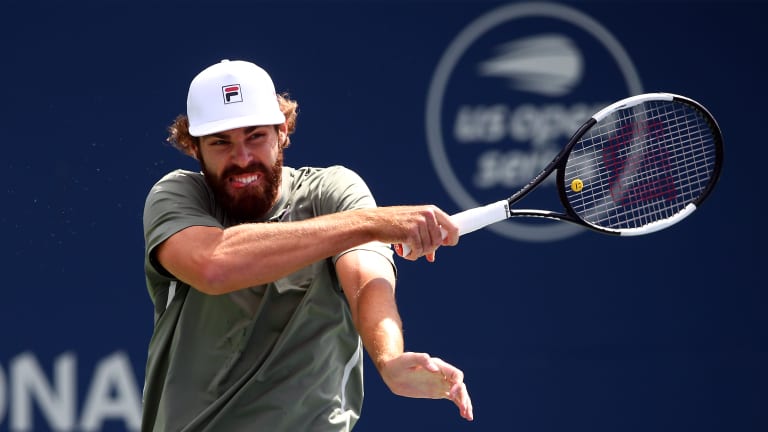National Bank Open
Reilly Opelka stuns Stefanos Tsitsipas to reach first Masters 1000 final
By Aug 15, 2021National Bank Open
Ben Shelton and Victoria Mboko got better with every round in Canada, and didn’t stop until they had their first 1000-level titles
By Aug 08, 2025National Bank Open
Ben Shelton battles back to capture biggest title of career at Masters 1000 event in Toronto
By Aug 08, 2025National Bank Open
Ben Shelton defeats Taylor Fritz to reach first Masters 1000 final of career in Toronto
By Aug 07, 2025National Bank Open
Ben Shelton seals first Masters 1000 semifinal to book Toronto clash with Taylor Fritz
By Aug 06, 2025National Bank Open
Alexander Zverev overcomes defending champ Alexei Popyrin in Toronto quarterfinals
By Aug 05, 2025National Bank Open
Top seed Alexander Zverev advances to Toronto quarterfinals after Cerundolo retires
By Aug 03, 2025National Bank Open
Alex Michelsen reaches first Masters 1000 quarterfinal in Toronto, Karen Khachanov awaits
By Aug 02, 2025National Bank Open
Taylor Fritz quiets home hope Gabriel Diallo in Toronto; Frances Tiafoe, Andrey Rublev also advance
By Aug 02, 2025National Bank Open
Despite scheduling complaints, Alejandro Davidovich Fokina wins early bird special vs. Jakub Mensik in Toronto
By Aug 01, 2025Reilly Opelka stuns Stefanos Tsitsipas to reach first Masters 1000 final
Just three points from defeat in his opening match against Nick Kyrgios, the big fella will play for the title on Sunday.
Published Aug 15, 2021
Advertising

Opelka was dominant at net against the Greek.
© 2021 Getty Images